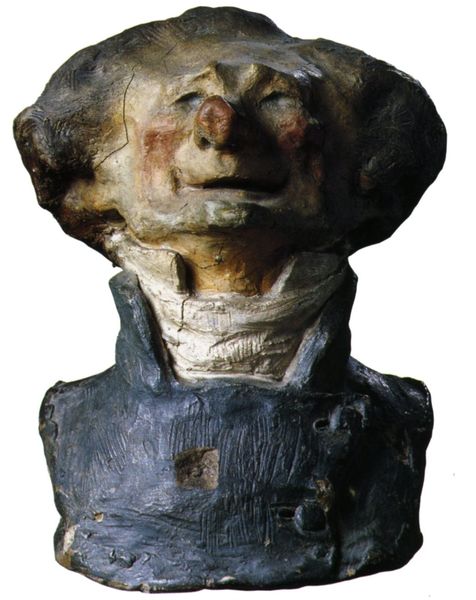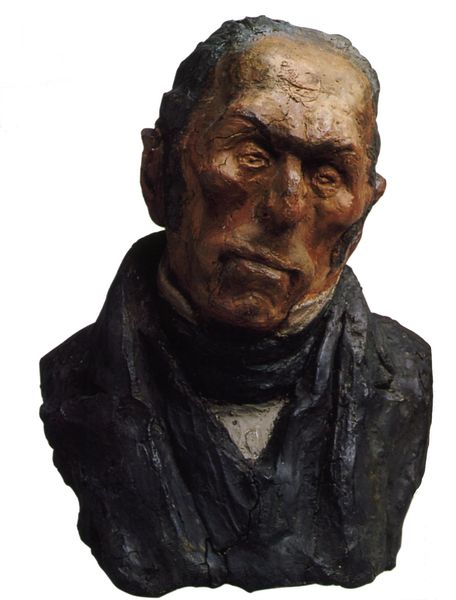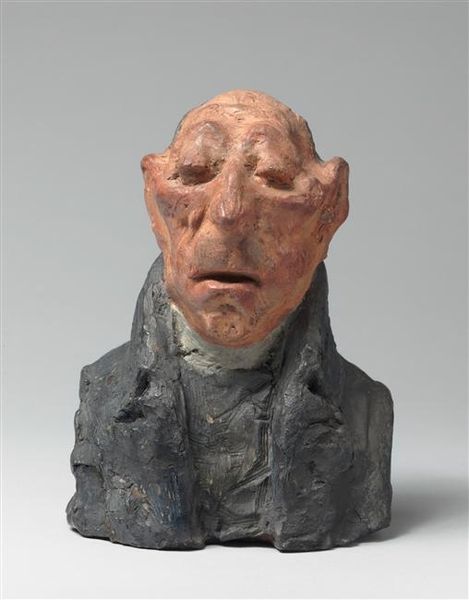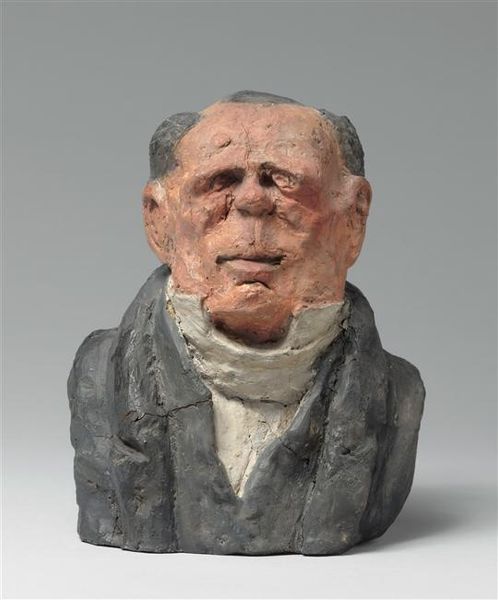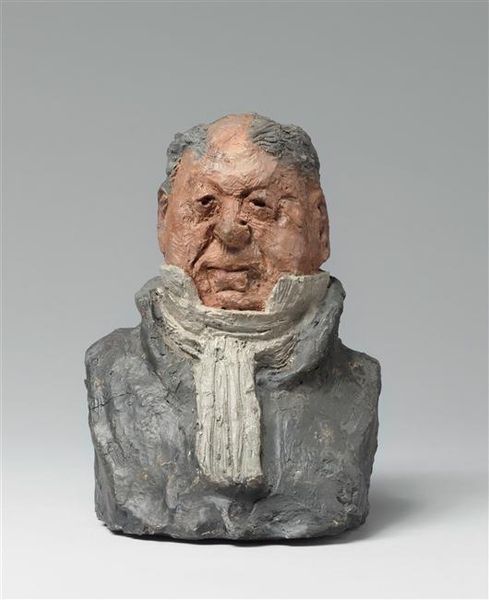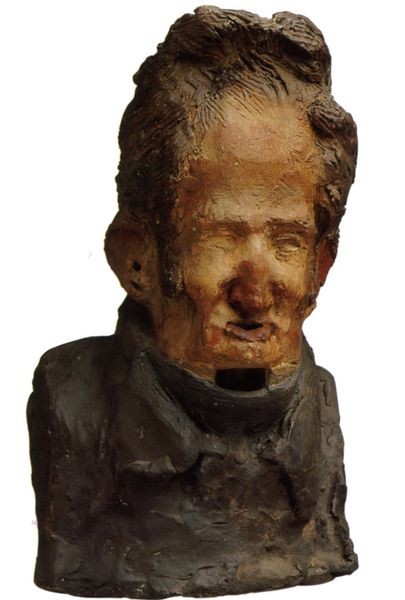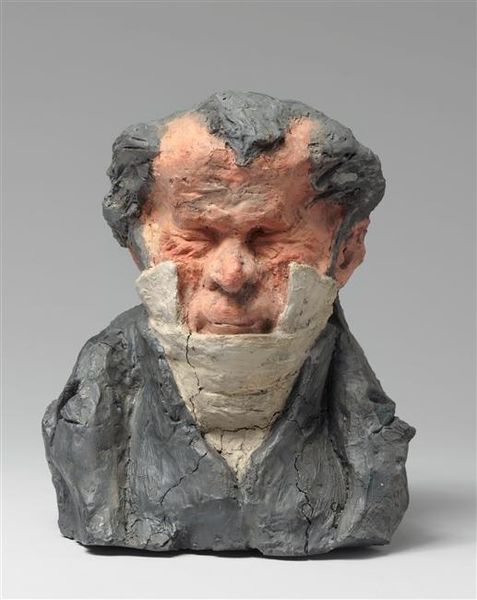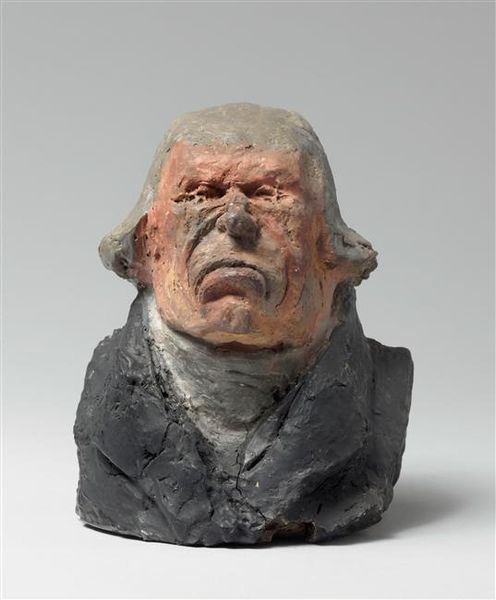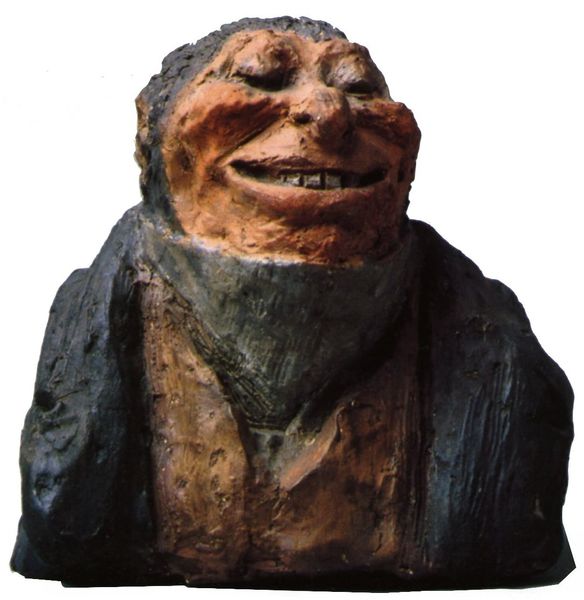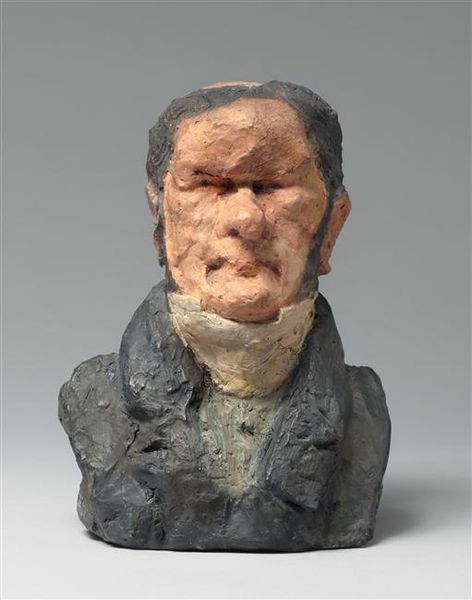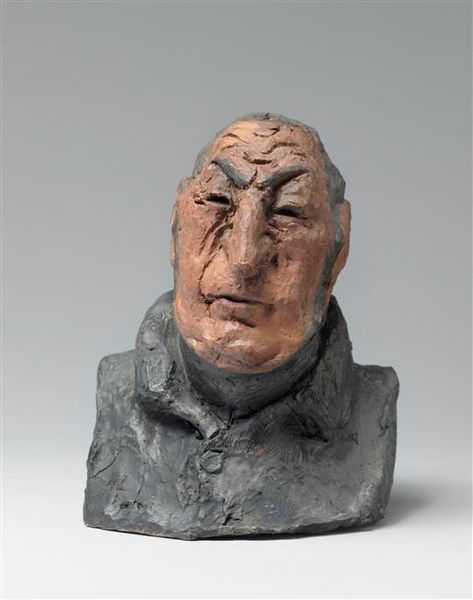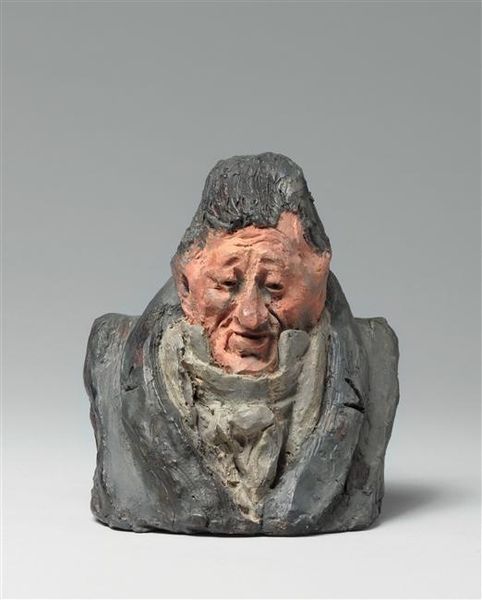
André-Marie-Jean-Jacques Dupin, Also Called Dupin the Elder (1783-1865), Deputy, Lawyer, Academician 1832
0:00
0:00
ceramic, sculpture
#
portrait
#
16_19th-century
#
sculpture
#
ceramic
#
sculpture
#
realism
Copyright: Public domain
Curator: The piece before us is Honoré Daumier's ceramic sculpture, "André-Marie-Jean-Jacques Dupin, Also Called Dupin the Elder," created in 1832. What strikes you about it? Editor: Initially, I'm struck by the distortion. There’s almost a caricature-like quality to the features. It feels like a biting commentary, a kind of brutal honesty rendered in clay. Curator: That’s quite astute. Daumier was, in fact, known for his satirical portrayals of Parisian society. Dupin, a prominent lawyer, deputy, and academician, was a frequent target of his critical eye. What Daumier is doing here is actively participating in, and shaping, public opinion of prominent officials like Dupin. Editor: So it's not just a portrait but a statement about power, perhaps? Looking at the way Dupin is rendered, I'm reminded of discussions around physiognomy, the now-discredited idea that one's character is reflected in their physical features. Did that play a role here? Curator: It’s definitely at play here. While Daumier does depict Dupin’s physical likeness, his intent isn’t merely replication. The exaggerated features – the bulbous nose, pursed lips – speak to Daumier’s critical interpretation of Dupin's character, aligning with the contemporary perception of lawyers as being greedy, corrupt and self-serving. Editor: It makes me wonder about access, too. Was this piece widely displayed? Did it circulate primarily among an elite group, reinforcing existing power dynamics, or did it manage to reach a broader public, stirring debate and possibly resistance? Curator: During this time, it would have been difficult to circulate these artworks as widely as Daumier's lithographs were. While Daumier was celebrated, there also existed a deeply polarizing view, as people who aligned with the Monarchy found his work grotesque and slanderous. This piece remained relatively obscure until the early 20th century. Editor: It seems to serve as a potent reminder of how art can be used as a form of social critique, a way to challenge and subvert those in positions of power. Curator: Precisely. And how artists navigate the delicate balance between artistic expression and societal pressures is critical. The politics of imagery as shaped by Daumier here are quite strong. Editor: Considering its historical context, this ceramic bust still speaks to issues of representation and power. A single image can encapsulate a wealth of political and social commentary. Curator: It is really something to think about. Thanks for offering a view of this artwork! Editor: It's been insightful to explore this Daumier sculpture, its ability to communicate so effectively across time and context.
Comments
No comments
Be the first to comment and join the conversation on the ultimate creative platform.
